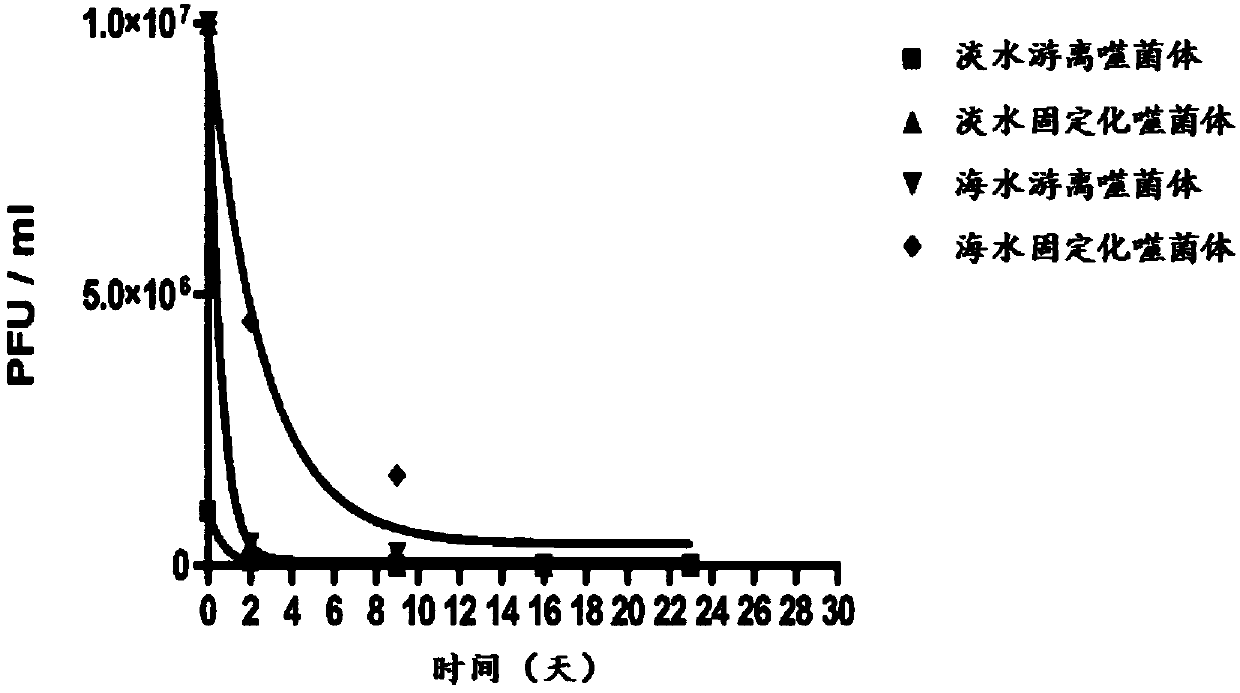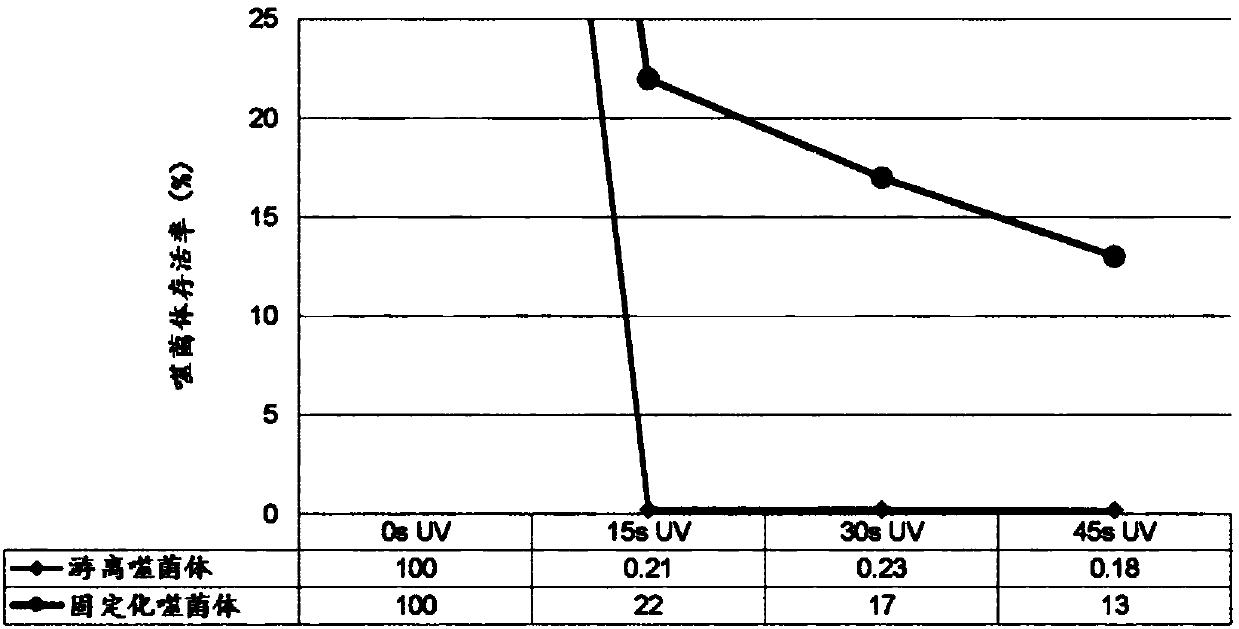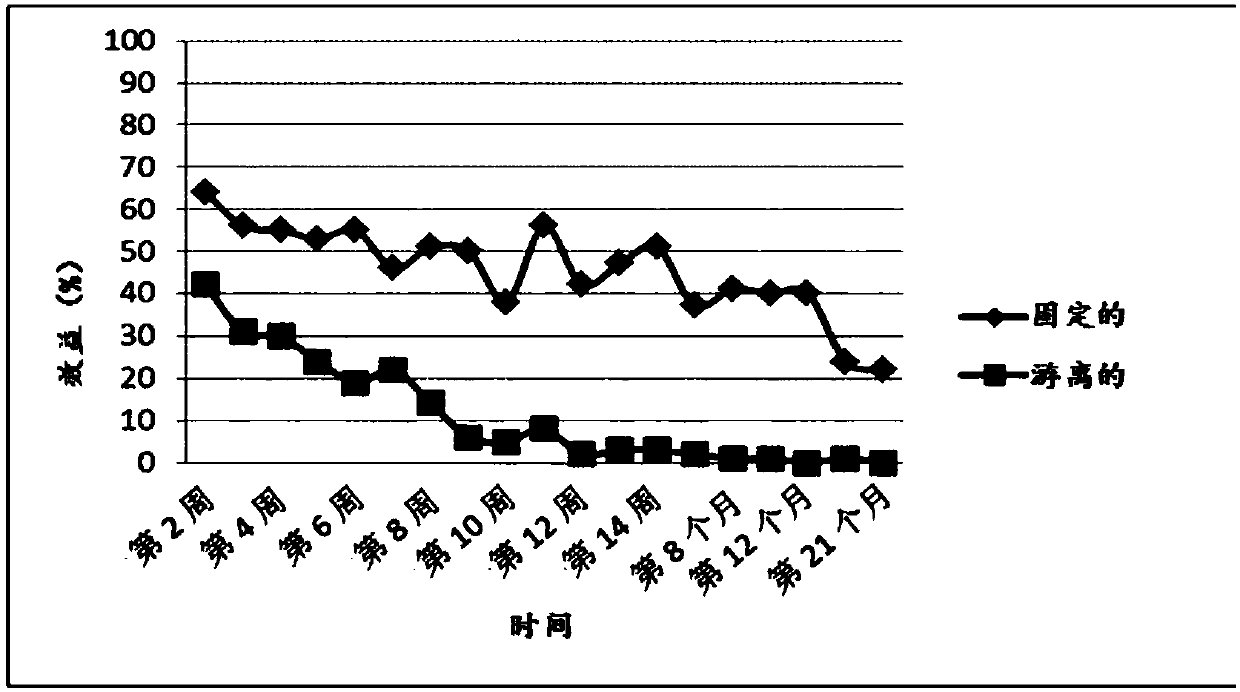Treatment of bacterial infections in aquaculture
A technology of bacteria and vibrio, applied in antibacterial drugs, anti-infective drugs, medical raw materials derived from viruses/phages, etc., can solve short-term problems
- Summary
- Abstract
- Description
- Claims
- Application Information
AI Technical Summary
Problems solved by technology
Method used
Image
Examples
Embodiment 1
[0106] We tested phage covalently attached to plastic (nylon) and carbohydrate (cellulose) particles to demonstrate the feasibility of applying the compositions of the invention in aquaculture applications.
[0107] First, it was determined whether phage immobilized on cellulose powder survived longer than free phage in seawater and freshwater. figure 1 Survival rates of immobilized and non-immobilized phage (Φlin24) in seawater are shown. Phage immobilized on cellulose powder (Φlin24) survived significantly longer than non-immobilized phage in seawater (P≤0.001).
[0108] process
[0109] Media and methods
[0110] Table 1 - All media were prepared and methods followed appropriate standard operating procedures (SOPs).
[0111] Table 1
[0112]
[0113] "Agar 50" SOP
[0114] ●Weigh the required amount of powder
[0115] ●Add the powder to an empty bottle of sufficient volume
[0116] ●Add distilled water to the required volume
[0117] • Loosen the lid, which is se...
Embodiment 2
[0245] figure 2 The data presented demonstrate that immobilized phage are more resistant to UV irradiation than dissociated phage.
Embodiment 3
[0247] Figure 3 to Figure 6 Stability under various conditions including storage conditions for preparations of covalently linked phage is shown.
[0248] image 3 The storage stability of Pectinobacillus monophage immobilized on cellulose is shown. In this example, preparations were stored in liquid (PBS buffer) in single-use aliquots at 4°C.
[0249] Figure 4 The storage stability of Pectinobacillus monophage immobilized on copolymer beads is shown. with the above image 3 In contrast, the copolymer beads were stored in single-use aliquots at 4°C, but under dry conditions.
[0250] Figure 5 Shown are the relative viability (ie stability) of freed and immobilized phage when exposed to stress conditions. The stress conditions used were as follows:
[0251] 1. Humidity——4℃, 4 weeks
[0252] 2. Drying - 4°C, 4 weeks
[0253] 3. Ultraviolet radiation, 30 seconds
[0254] 4. 85°C, 1 minute
[0255] Image 6 The storage stability of freed and immobilized phage store...
PUM
| Property | Measurement | Unit |
|---|---|---|
| diameter | aaaaa | aaaaa |
| diameter | aaaaa | aaaaa |
| diameter | aaaaa | aaaaa |
Abstract
Description
Claims
Application Information
 Login to View More
Login to View More - R&D
- Intellectual Property
- Life Sciences
- Materials
- Tech Scout
- Unparalleled Data Quality
- Higher Quality Content
- 60% Fewer Hallucinations
Browse by: Latest US Patents, China's latest patents, Technical Efficacy Thesaurus, Application Domain, Technology Topic, Popular Technical Reports.
© 2025 PatSnap. All rights reserved.Legal|Privacy policy|Modern Slavery Act Transparency Statement|Sitemap|About US| Contact US: help@patsnap.com



